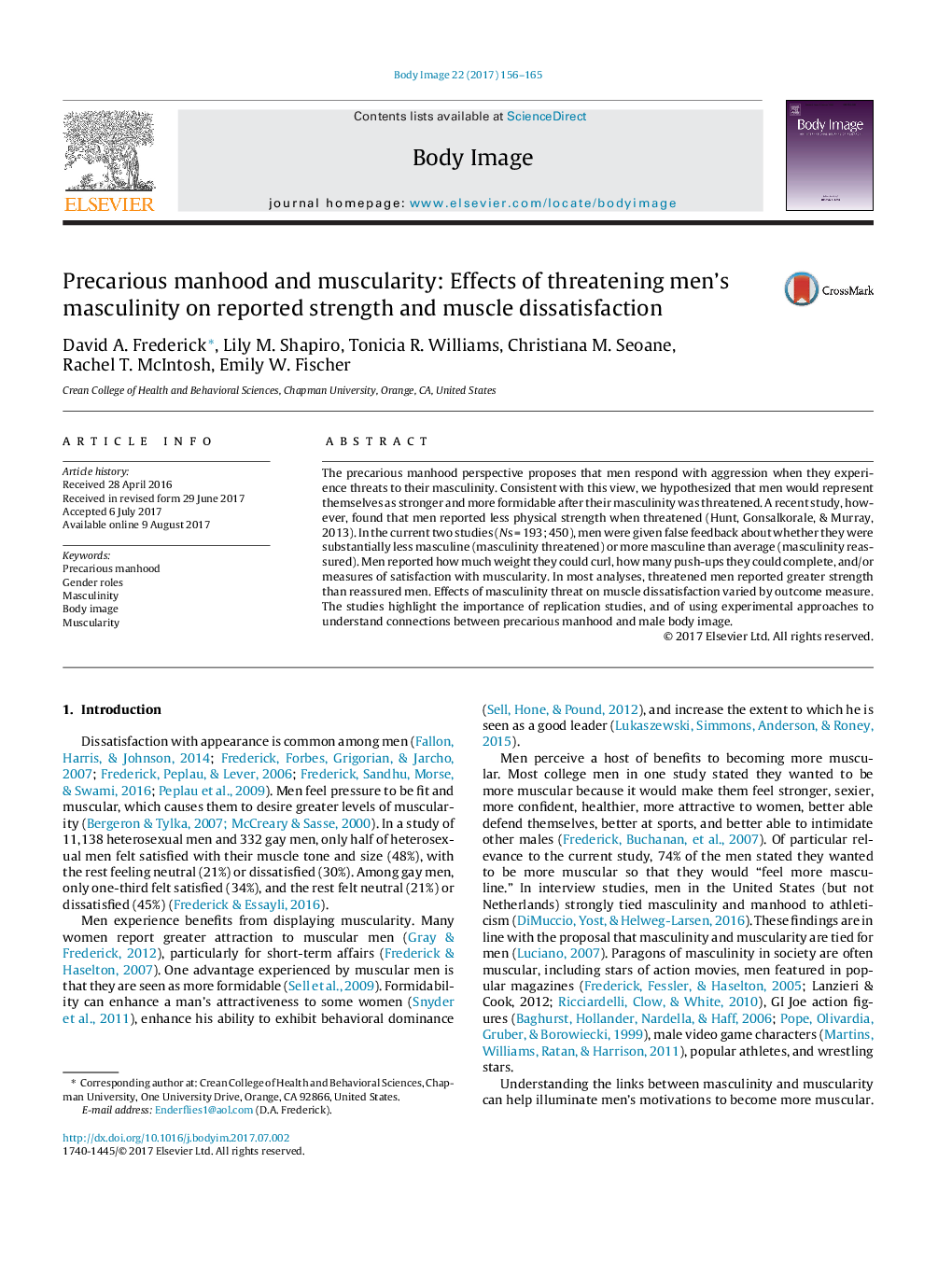| Article ID | Journal | Published Year | Pages | File Type |
|---|---|---|---|---|
| 5038384 | Body Image | 2017 | 10 Pages |
â¢Men respond aggressively when their masculinity is challenged or threatened.â¢Men's masculinity was threatened or reassured with false feedback.â¢Threatened men reported ability to curl more weight and do more push-ups.â¢Effects of threatened masculinity on attitudes towards muscularity were inconsistent.â¢Results highlight the connections between precarious manhood and body image.
The precarious manhood perspective proposes that men respond with aggression when they experience threats to their masculinity. Consistent with this view, we hypothesized that men would represent themselves as stronger and more formidable after their masculinity was threatened. A recent study, however, found that men reported less physical strength when threatened (Hunt, Gonsalkorale, & Murray, 2013). In the current two studies (Ns = 193; 450), men were given false feedback about whether they were substantially less masculine (masculinity threatened) or more masculine than average (masculinity reassured). Men reported how much weight they could curl, how many push-ups they could complete, and/or measures of satisfaction with muscularity. In most analyses, threatened men reported greater strength than reassured men. Effects of masculinity threat on muscle dissatisfaction varied by outcome measure. The studies highlight the importance of replication studies, and of using experimental approaches to understand connections between precarious manhood and male body image.
